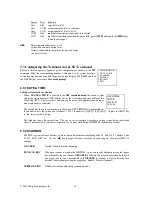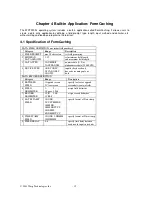
.
© 2003 Wasp Technologies, Inc.
- 7 -
Charging Considerations
It is important to consider the surrounding temperature whenever you are charging the Li-Ion battery pack. The process
is most efficient at normal room temperature or slightly cooler. It is essential that you charge batteries within the stated
range of 32
°
F to 113
°
F (0
°
C to 45
°
C). Charging batteries outside of the specified temperature range can damage the
batteries and shorten their life cycle.
Effects Of Overcharging Batteries
Overcharging may occur when a Li-Ion rechargeable battery is charged in regular or quick charging rate after it has
been fully charged, but there is no risk of overcharging while charging at the trickle charging rate. A battery left to
charge for several weeks may appear to have minimal capacity. This type of failure can be remedied by temporarily
depleting the battery of its power and recharging it to rejuvenate it. This condition can be prevented by avoiding
overcharging for long periods of time or always using the WDT2200 to charge the batteries of terminal. The WDT2200
starts the charging process at the quick charging rate and switches to the trickle charging rate when it detects the battery
is fully charged.
2.5 Storage and Safety Precautions
Batteries should be stored in an open environment condition and placed where there is no risk of accidental shorting
or other damage. Although charged Li-Ion batteries may be left unused for several months, their capacity may be
reduced due to internal resistance. If this happens they will require recharging prior to use. Li-Ion batteries may be
stored at temperatures between -4
°
F and 158
°
F (-20
°
C to 70
°
C).






























